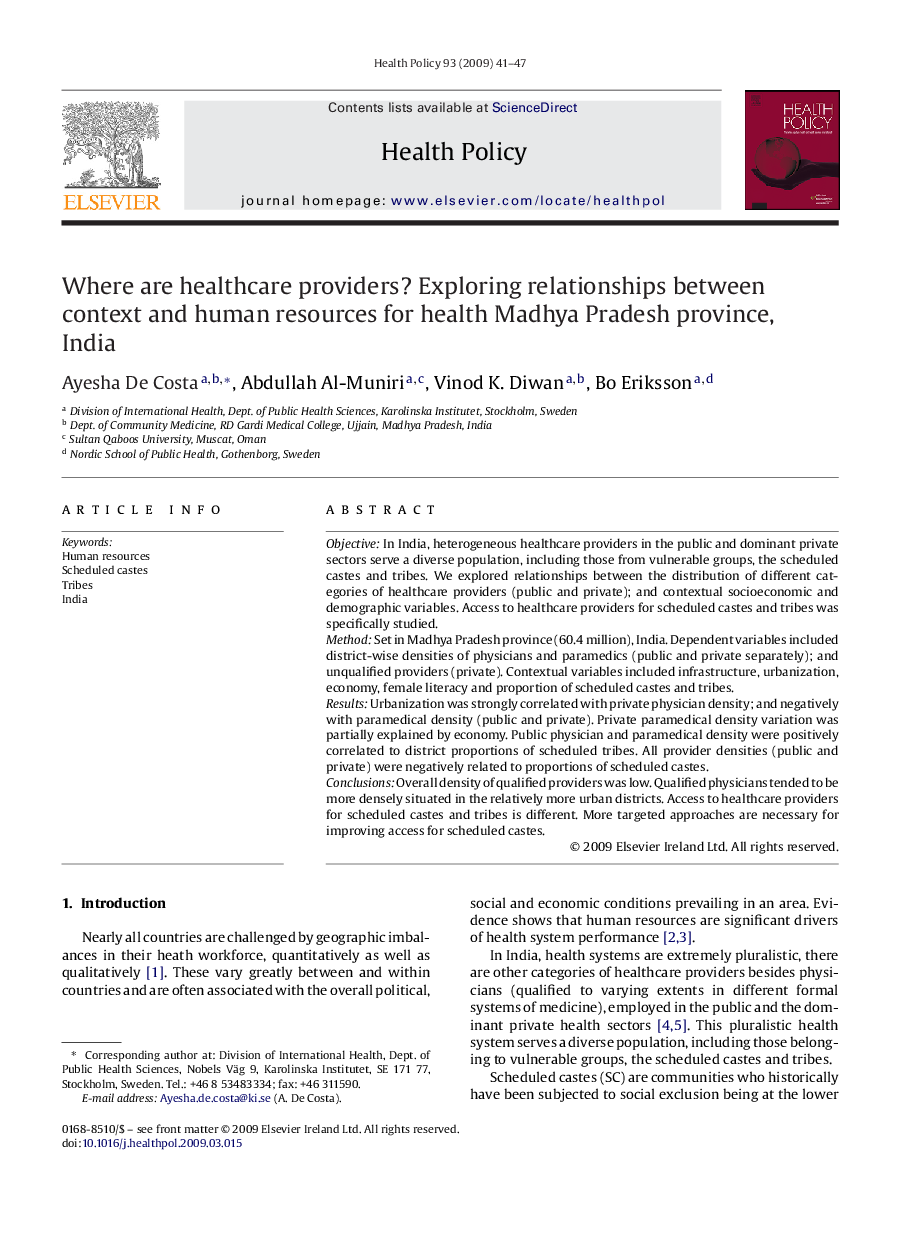| Article ID | Journal | Published Year | Pages | File Type |
|---|---|---|---|---|
| 4198478 | Health Policy | 2009 | 7 Pages |
ObjectiveIn India, heterogeneous healthcare providers in the public and dominant private sectors serve a diverse population, including those from vulnerable groups, the scheduled castes and tribes. We explored relationships between the distribution of different categories of healthcare providers (public and private); and contextual socioeconomic and demographic variables. Access to healthcare providers for scheduled castes and tribes was specifically studied.MethodSet in Madhya Pradesh province (60.4 million), India. Dependent variables included district-wise densities of physicians and paramedics (public and private separately); and unqualified providers (private). Contextual variables included infrastructure, urbanization, economy, female literacy and proportion of scheduled castes and tribes.ResultsUrbanization was strongly correlated with private physician density; and negatively with paramedical density (public and private). Private paramedical density variation was partially explained by economy. Public physician and paramedical density were positively correlated to district proportions of scheduled tribes. All provider densities (public and private) were negatively related to proportions of scheduled castes.ConclusionsOverall density of qualified providers was low. Qualified physicians tended to be more densely situated in the relatively more urban districts. Access to healthcare providers for scheduled castes and tribes is different. More targeted approaches are necessary for improving access for scheduled castes.
